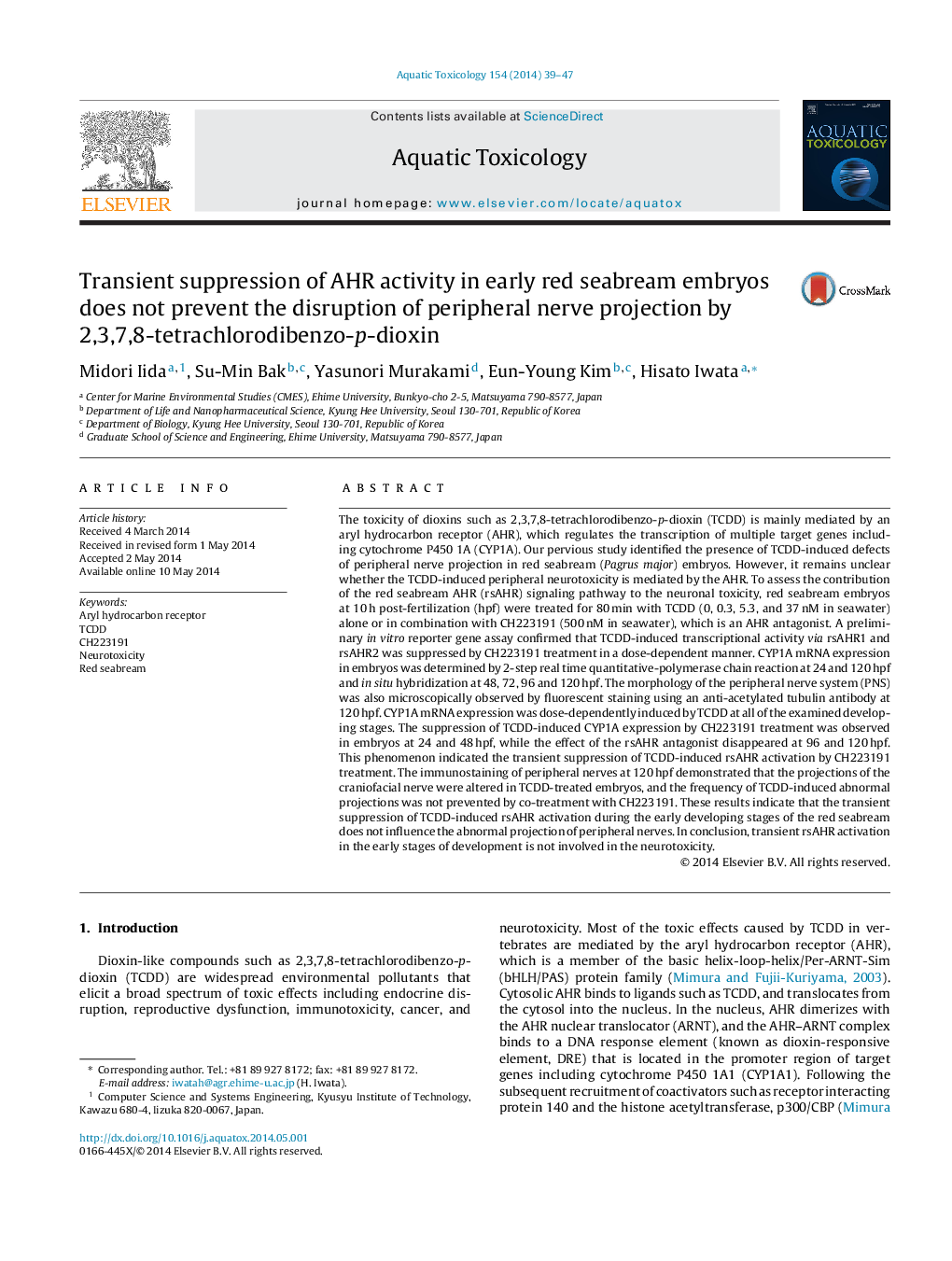| کد مقاله | کد نشریه | سال انتشار | مقاله انگلیسی | نسخه تمام متن |
|---|---|---|---|---|
| 4529202 | 1625951 | 2014 | 9 صفحه PDF | دانلود رایگان |

• We tested whether TCDD-induced neurotoxicity is mediated by AHRs in fish embryos.
• CH223191 co-treatment transiently suppressed TCDD-induced AHR activation.
• However, TCDD-induced neural defects were not rescued by CH223191 co-treatment.
• This suggests that AHRs in the early embryos are not involved in the neurotoxicity.
The toxicity of dioxins such as 2,3,7,8-tetrachlorodibenzo-p-dioxin (TCDD) is mainly mediated by an aryl hydrocarbon receptor (AHR), which regulates the transcription of multiple target genes including cytochrome P450 1A (CYP1A). Our pervious study identified the presence of TCDD-induced defects of peripheral nerve projection in red seabream (Pagrus major) embryos. However, it remains unclear whether the TCDD-induced peripheral neurotoxicity is mediated by the AHR. To assess the contribution of the red seabream AHR (rsAHR) signaling pathway to the neuronal toxicity, red seabream embryos at 10 h post-fertilization (hpf) were treated for 80 min with TCDD (0, 0.3, 5.3, and 37 nM in seawater) alone or in combination with CH223191 (500 nM in seawater), which is an AHR antagonist. A preliminary in vitro reporter gene assay confirmed that TCDD-induced transcriptional activity via rsAHR1 and rsAHR2 was suppressed by CH223191 treatment in a dose-dependent manner. CYP1A mRNA expression in embryos was determined by 2-step real time quantitative-polymerase chain reaction at 24 and 120 hpf and in situ hybridization at 48, 72, 96 and 120 hpf. The morphology of the peripheral nerve system (PNS) was also microscopically observed by fluorescent staining using an anti-acetylated tubulin antibody at 120 hpf. CYP1A mRNA expression was dose-dependently induced by TCDD at all of the examined developing stages. The suppression of TCDD-induced CYP1A expression by CH223191 treatment was observed in embryos at 24 and 48 hpf, while the effect of the rsAHR antagonist disappeared at 96 and 120 hpf. This phenomenon indicated the transient suppression of TCDD-induced rsAHR activation by CH223191 treatment. The immunostaining of peripheral nerves at 120 hpf demonstrated that the projections of the craniofacial nerve were altered in TCDD-treated embryos, and the frequency of TCDD-induced abnormal projections was not prevented by co-treatment with CH223191. These results indicate that the transient suppression of TCDD-induced rsAHR activation during the early developing stages of the red seabream does not influence the abnormal projection of peripheral nerves. In conclusion, transient rsAHR activation in the early stages of development is not involved in the neurotoxicity.
Journal: Aquatic Toxicology - Volume 154, September 2014, Pages 39–47